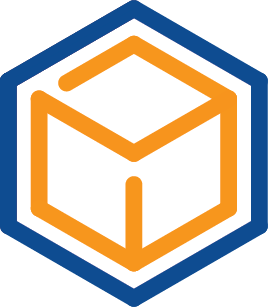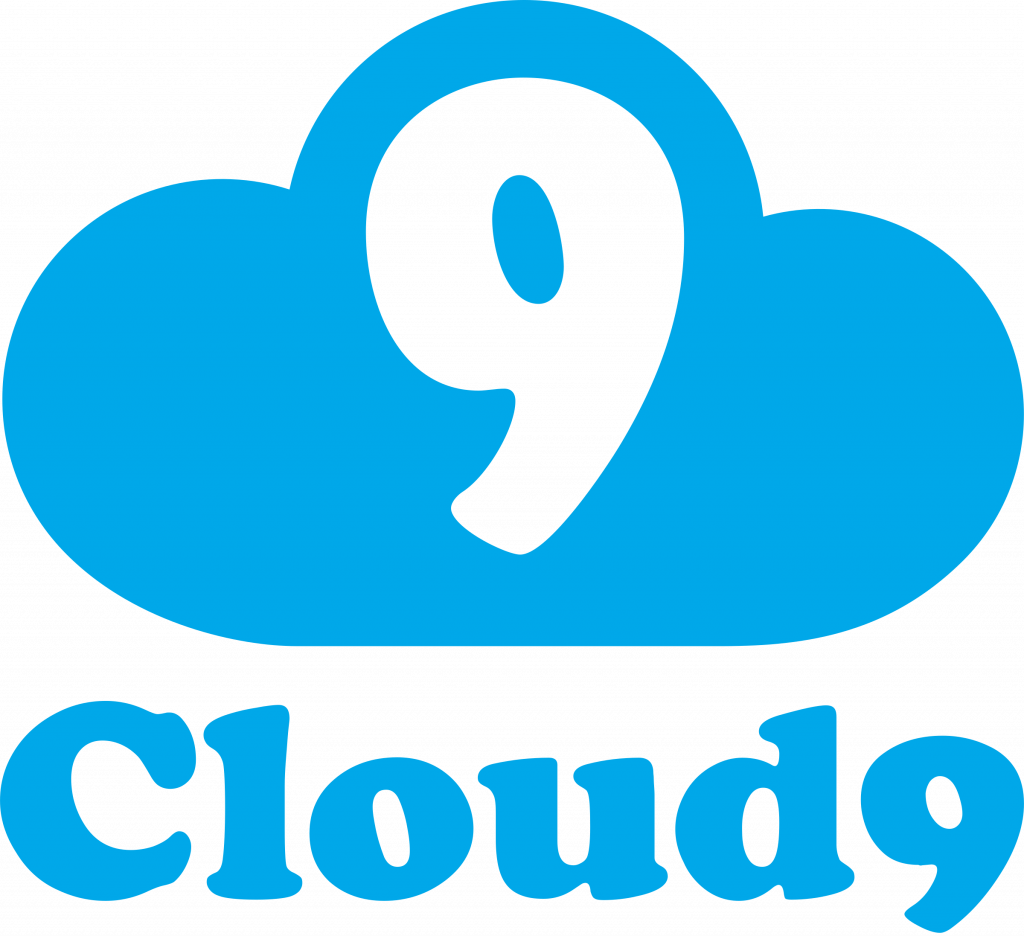
Our Nominations For The Top Software Development Tools For 2023
Julian Wallis
16 min read

Software Development In 2023 🧰
As we enter the ever-promising year of 2023, many exciting things are happening in the world of software development. In fact, the software industry has become one of the fastest-growing industries globally. And it’s bound to grow at an unprecedented rate!
Software applications support and empower human lives. Think about the home appliances with smart technology to ever-evolving cell phones to the POS systems at retail stores. Everything is controlled or maintained by some sort of software.
Thanks to the software development process and the engineers, testers, and managers who work round the clock, we now have a myriad of interconnected software applications that serve to make human life easier. For companies that want to scale and stay ahead of the curve, going digital is not just an option anymore.
That’s why companies must invest properly in software development tools/solutions providers because software development is a lengthy and cumbersome process. It involves many steps, from planning to designing to analysing to testing to maintaining.
Before we dive into our picks for the best software development tools for the coming year, let’s quickly go through what “software development tools” actually are.
What’s A Software Development Tool? ⚙️
As the name suggests, a software development tool is a computer program designed to make complex coding efficient and easier. It helps developers make the coding and project development cycle more manageable and uncomplicated.
Software developers and testers use these tools to write, evaluate, edit, and maintain software codes whenever necessary. Such tools can be used for debugging or further developmental support.
In today’s competitive industry, hundreds of software development tools are available. Choosing the right one that corresponds to your business needs and requirements can be stressful. It largely depends on what you want to do with it. It also depends on your project requirements. To help you with all this, we’re presenting you with a detailed selection of the best software development tools our team has experience using. Read on to find out.
What Do Software Development Tools Do? 🤔
Software development tools manage IT-based projects at every step of their development cycle. Teams can edit, share, and debug codes, while team leads can track code changes. At the same time, managers can handle project pipelines and ensure that there’s smooth workplace communication.

Here are some of the common uses of software development tools:
- Recognising and eliminating errors from the software systems
- Designing software with a focus on usability and UI/UX skills
- Implementing and testing any changes to the code base
- Checking systems for potential risks and security issues
- Automating repetitive tasks to scale the output and overall efficiency
- Deploying changes from a test environment to a production environment
- Assigning tasks, managing pipelines, identifying roadblocks, and communicating the development with team members
Considerations Before Selecting 📋
Your software development tool can only assist your team members if the initial software development plan is clear and well-intentional. If there are pre-existing problems in software specifications, architecture, code blocks, UI/UX design, or the overall goal, no software development tool can magically solve such innate problems.
Consider the following when choosing a tool for software development.
✅ The Tool Must Be Appropriate
No one wants to use the wrong software development tool for the right project. It’s imperative that developers choose tools relevant to the software environment they are working with. Just because a certain tool is getting all the hype doesn’t mean companies should jump on the bandwagon and start using that tool.
🤝 Use Tools That Are Helpful
The tool developers select must be helpful right from the start of the project. The tools are expected to assist in the development process from the beginning to its completion. If a tool doesn’t do that, there’s no point in using it anymore.
👨💻 Do Your Developers Have Some Prior Experience?
It’s crucial to know if your developers have some level of experience with the tools they are expected to use. If the team is familiar with the tools, it’s a win-win. Otherwise, you may have to spend time and resources training the team or finding different tools for them.
📈 Each Tool Comes With A Learning Curve
All software development tools have a learning curve. Some are steeper than others. The amount of time and effort developers must invest depends on the complexity of the tools they will use. So choosing the right tool will obviously make the development process faster and, thereby, more efficient.
🏢 Does The Tool Follow Company Standards?
Software development tools can also be used within a company to standardise the development process. This also helps in onboarding new developers. With a development tool, the company can quickly move new or existing developers between projects and create a benchmark across all projects.
Without further ado, in no particular order, here’s our pick of the 10 best software development tools you may want to consider for your development process in 2023.
#1 Amazon Web Services (AWS)

🔑 Key Features
Amazon Web Services is an online platform used primarily for on-demand operations, like remote computing, networking, servers, storage, content delivery, and security, to help businesses scale and grow. The best things about AWS are its infrastructure and performance. Businesses can use it to innovate faster while lowering costs and becoming more agile.
AWS allows developers to leverage both infrastructure technologies as well as emerging technologies, such as machine learning, artificial intelligence, data lakes and analytics, and the Internet of Things, to build new applications or move existing ones to the cloud. Since it has a significantly large and dynamic global community, immense support is guaranteed.
Additionally, a deep set of cloud security tools and features back the platform, offering you a highly flexible and secure cloud computing environment.
🥳 Pros
- Supports various programming languages and operating systems
- Is constantly being updated with the latest changes and advancements
- Helps developers create custom mobile applications
- Makes it easier to get insightful data for better decision making
🙅♀️ Cons
- AWS sets default limits on resources, depending on your region
- Some of its security features can’t be customised for your project
- For technical support, you’ll need to subscribe to a paid support plan
Overall, AWS is an excellent choice for teams looking for an affordable and scalable software development platform with plenty of useful tools and features. They have convenient payment options, and free offers are also available.
#2 GitHub

🔑 Key Features
GitHub is primarily a version control system. It boasts a sheer number of users: around 65 million developers and three million organisations use GitHub daily. This makes GitHub the world’s largest developer community.
Developers can design their own code and host it from their repositories. Since GitHub is equipped with project management tools, developers can complete their tasks efficiently, collaborate with other developers, and stay aligned with the project development cycle.
GitHub can be seamlessly integrated with other tools and hosted on cloud platforms or macOS and Windows OS.
🥳 Pros
- Contains project management tools to coordinate code reviews
- Features easy documentation for any kind of software programming project
- Allows developers to freely host documents directly from code repositories
- Features automated issue tracking and debugging that minimises errors
🙅♀️ Cons
- GitHub comes with a complex learning curve for new developers
- Sometimes, the roles and permissions might not seem advanced enough
In short, GitHub is a cloud-based platform that is quite popular because of its extensive community support and integration with Git’s version control. The best thing about GitHub’s pricing is that it comes free of cost for individual developers, with paid options available for teams and enterprises.
#3 Bootstrap

🔑 Key Features
Bootstrap is a popular open-source web development framework that helps developers create responsive websites. It provides a set of reusable HTML, CSS, and JavaScript libraries that can be built into production-ready websites. With Bootstrap’s grids, your developers can create responsive layouts that will work excellently on any screen size or device.
With Bootstrap’s jQuery plugins, developers can add advanced functionality such as carousels, modals, and tabs. There are thousands of open-source Bootstrap templates available that anyone can use and leverage the most out of them.
🥳 Pros
- Comes with ready-to-use code blocks for a faster development cycle
- Contains an extensive list of components with base styling for HTML
- Uses mobile-first approach making app development uncomplicated
- Comes with many free plugins and templates, as well as drag-and-drop functionality
🙅♀️ Cons
- Offers a limited number of third-party integrations
- Supports only three programming languages: HTML, CSS, and Java
- Seems heavy at times and lacks a lightweight version
That is to say, for developers working with HTML, CSS, and Java, Bootstrap is one of the best frameworks out there. What’s more interesting is that Bootstrap is open-source, meaning it’s free to download and use for everyone.
#4 TailWind CSS

🔑 Key Features
TailWind CSS is a utility-based framework that has been growing in popularity among developers since 2019. It offers a fast-styling process and flexibility, unlike any other CSS framework. That’s why developers prefer it to create React projects.
TailWind gives developers complete control over the styling of web applications and offers a faster CSS styling process. It doesn’t have a default styling template, so your projects will have a different look and feel. You can easily create good-looking and responsive styling elements which are responsive and mobile-friendly.
🥳 Pros
- Gives your developers complete control over styling elements
- Offers faster CSS styling properties without needing to create the design from scratch
- Focuses on responsiveness and security more than other frameworks
- Helps you keep your final CSS as small as possible
🙅♀️ Cons
- Separating page structure and style might not be quite effortless at times
- Comes with a steeper learning curve
- Lacks some important components, such as headers, buttons, and navigation bars
- Lags behind Bootstrap in terms of documentation and how-to guides
Put simply, TailWind is quite different from other CSS frameworks. The basic plan of TailWind comes free of cost, with other paid plans available. You can check out TailWind CSS vs Bootstrap to see how they go head to head.
#5 DBSchema

🔑 Key Features
DBSchema is a web-based database design tool that allows you to create, modify, and query your database designs. Developers can easily use DBSchema for MySQL, MariaDB, MongoDB, and SQLite. With it, you can share the schema and deploy it on several different databases.
In other words, DBSchema is a universal database design tool for out-of-the-box schema management, schema documentation, design in a team, and deployment on multiple databases. The great thing about DBSchema is that it allows developers to create database queries visually — even if they have little or no experience with SQL.
🥳 Pros
- Offers a database-independent logical design with multiple entities
- Connects to any database and helps you reverse engineer the schema
- Uses layouts/diagrams to interact with database schema
- Lets you build SQL queries without having to write a single line of code
🙅♀️ Cons
- DBSchema might sometimes run into function errors
- Limited free version as it can only be used for evaluation purposes
DBSchema is a great database design tool, and it comes with three levels of pricing: academic, personal, and commercial. The academic tier is for educational purposes, whereas the personal tier is for individual developers and administrators. Commercial licences are meant for organisations and businesses. There’s also a free community edition for learners.
#6 Node.js

🔑 Key Features
Node.js helps your developers run JavaScript applications outside of a web browser. Applications written in Node.js are designed to take advantage of the asynchronous nature of JavaScript, running multiple tasks concurrently and handling errors gracefully.
If you are a company that develops network applications such as web servers, Node.js is the best software development tool for you as it handles large volumes of data without stalling. Since Node.js has a large ecosystem of modules, one can easily add features and functionality to applications.
🥳 Pros
- Encompasses all the benefits of JavaScript with the back-end support
- Has extensive libraries and tools for an efficient development cycle
- Relies on an event-based model and so makes coding faster
- Offers non-blocking I/O systems that process concurrent requests
🙅♀️ Cons
- Is single-threaded and event-driven and might not be best for heavy computational workloads
- Might slow down if multiple tasks are running concurrently and each is having a “call back” with several nested if-statements
- Comes with a steeper learning curve and might be a challenge for new developers
Overall, Node.js is designed to build scalable network applications. Since Node.js is open-source, anyone can easily download and use it.
#7 Jira

🔑 Key Features
Jira is one of the most popular software development tools used by agile teams for planning, tracking, and releasing software. Jira is highly customisable, helping a team of developers generate reports, create backlogs, and update progress per Scrum planning principles.
At its core, Jira is a workflow management tool. However, it also has a suite of tools for DevOps for patching, bug resolutions, and release status. Another great thing about Jira is that it easily integrates with Kanban boards, GitHub, AWS, Microsoft Teams, and Slack, among others.
🥳 Pros
- Comes with advanced reporting capabilities and an easy-to-use UI
- A ticket filtering system allows you to quickly find project issues
- Can add subtasks to a product roadmap with drag-and-drop functionality
- Comes with a reliable customer support system
🙅 Cons
- Can be a tad bit overwhelming because of the vast range of customisation options
- Cannot add more than two assignees to an individual task or ticket
- Might be expensive compared to other project management tools
In short, Jira is a great workflow management tool for issues and bug tracking, and it comes with a free version for up to 10 members. Three premium plans are also available: standard, premium, and enterprise.
#8 Docker

🔑 Key Features
Docker is a powerful platform that helps developers build, share, and run applications. It contains excellent APIs and CLIs that simplify the overall software development process.
The great thing about Docker is it helps your developers build unique applications and use it for code review. Thanks to Docker Hub Repository, they can easily share code and container images with their team members.
There’s a large community of developers supporting Docker, and it’s extremely flexible.
🥳 Pros
- Comes with robust integrations with industry-standard tools
- Extremely flexible and customisable — and has a huge database
- Can easily share container images and code for review
- Boasts a large community of developers and their unwavering commitment
🙅 Cons
- Comes with a complex learning environment
- Is memory intensive and requires higher configuration
Docker is engineered to simplify the overall software development cycle, and it comes with a free version for personal use. There are three options for business use: pro, team, and business.
#9 AWS Cloud9

🔑 Key Features
Cloud9 from Amazon Web Services (AWS) is a prepackaged platform consisting of tools targeting common programming languages such as Python, Java, JavaScript, and PHP.
Cloud9 is best for building, testing, and deploying websites. It not only supports common coding languages but also allows for many shortcuts. It’s the best way to test apps and sites in the cloud as you create them.
🥳 Pros
- Supports most programming languages
- Allows you to easily switch between local and remote execution of servers
- Lets you collaborate with teams easily without having to use a local IDE
- Comes with plenty of SDKs, libraries, and plugins
🙅 Cons
- Has a complex environment and is challenging for beginners
- UI might seem difficult to navigate
- Comes with a limited amount of add-on supports
To sum up, Cloud9 lets your development team write, run, and debug code directly from the browser without installing separate IDEs. What’s more, there are no additional charges for Cloud9. You only have to pay for storage resources that you use to run and store your code. If you need a detailed breakdown of pricing, you’ll need to request a quote from Amazon.
#10 VS Code

🔑 Key Features
Microsoft’s Visual Studio Code is a text editor that supports code editing, debugging, highlighting, and code review options. The great thing about VS Code is that it supports multiple programming languages and easily detects if there’s a fault or cross-language reference.
Another benefit of using VS Code is that it comes with IntelliSense, which detects any inconsistencies or issues with code snippets. It also makes variable declarations automatically. Say a certain variable is being used in the program, and the user has forgotten to declare it. In that case, IntelliSense will declare it for the user.
VS Code also provides cross-platform support. So it doesn’t matter whether your developers are using Windows, Linux, or macOS; they will all get support from using Microsoft’s Visual Studio Code.
🥳 Pros
- Supports multiple programming languages in a single code editor
- Comes with IntelliSense, which detects any flaws or inconsistencies in the code
- Provides cross-platform support for Windows, Linux, and Mac
- Comes with built-in web support for web applications
🙅 Cons
- Might need to install and customise your own plugins at times
- Comes with a few niche features that are hard to find for a casual user
In short, VS Code is an excellent text editor that supports almost all programming languages, from C# to Typescript to Go. As per the pricing of VS Code, you get access to free tools for individuals and subscription options for businesses and enterprises, which provide a comprehensive set of tools to manage your project. You’ll need to write to Microsoft’s sales team to know more about the exact quote.
The Best Software Development Tools For 2023: Final Words 💭
Without a doubt, the right software development tool has the ability to transform the overall software development process. It maximises productivity and assists in driving meaningful results.
Regardless of the size and location of your company, with the right selection of software development tools, you’re able to work with various developers, track changes, monitor progress, and manage developmental sprints from start to finish.
However, before selecting one such tool, make sure you consider all the pros and cons and features of each tool, along with its prices and offerings. In the end, select a tool that enhances your company’s and team’s overall performance. Tech consultants can definitely help you with this while also challenging your methods and processes.
If you need more information about software development tools — or would like to scale your team’s performance but aren’t sure how and where to start — feel free to reach out to us for a friendly chat. We would be happy to help you!
Topics
Published On
December 19, 2022

